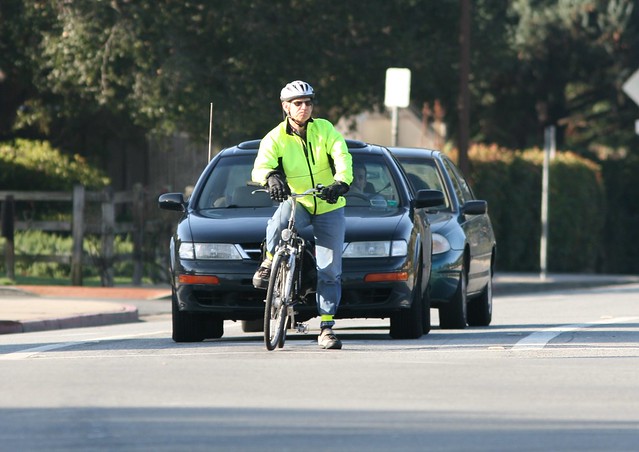
The wheels are turning slowly in the movement to improve biking and walking conditions in San Mateo County as a lack of cohesive political will leaves little traction for any real changes.
A new plan drafted by the Peninsula's twenty sprawling cities is bringing some overdue attention to the need for safer streets, but critics say it comes with no guarantee of action and sidesteps some of the area's biggest obstacles.
“There are some things the cycling community has repeatedly asked for for over three or four years that have been ignored,” said Carlos Babcock, community advocacy coordinator for the Silicon Valley Bicycle Coalition (SVBC). "But we are happy that they’re actually making a concerted effort for both bike and pedestrian issues. It's the first time it’s ever going to include a pedestrian plan, as well."
The San Mateo County Comprehensive Bicycle and Pedestrian Plan would update an 11-year-old blueprint for a countywide bikeway network, marked primarily with signage and some striped bike lanes, as well identifying focus areas to make pedestrian improvements. However, advocates say the plan creates an often inconvenient and spotty network of bike routes, doesn't compel cities to actually implement the changes, and fails to address fundamental issues such as dangerous freeway crossings.
"There's really no overriding leadership," said Caryl Gay, Peninsula advocate for the SVBC, who described the plan as a "wish list" pieced together by a disjointed collection of municipalities. "There's nobody at the county level to shepherd projects through to completion."
Municipalities can use the plan as a guideline for implementing and obtaining funding for projects, but "if a city doesn't want to submit a project for funding, they don't have to," said Gay. It does go as far as recommending that each city hire a bicycle-pedestrian coordinator, but in a geographic area spread so thin, "that's a really unrealistic and not a very cost-effective way of doing planning and implementation."
"This bottom-up style of government is one of the unique features of San Mateo County. We need a countywide network that will serve cyclists that are going the entire length of the Peninsula," she said.
The lack of coordination between the county's numerous city and transit agencies seems to lead to finger-pointing, leaving cycling commuters to suffer the results of a patchwork bike network, advocates said. Despite their lobbying efforts, dangerous freeway crossings and indirect bike routes remain on the list of major deterrents to cycling not addressed by the plan.
One of the largest bureaucratic obstacles to improving street safety around freeway intersections is Caltrans, the state's highway agency, which has jurisdiction. Narrow bridges, a lack of bike facilities, and high volumes of car traffic accessing freeways like 101 present hazards intimidating enough to discourage most residents from cycling.
However, "the cities have no authority to make [improvements] happen," said Steve Vanderlip of Bike San Mateo County. "That's a huge issue that'll take a lot of money and a lot of pressure from a lot of people to get done."
Advocates also bemoan the plan's one-mile diversion of the north-south bicycle route from Middlefield Road connecting North Fair Oaks and Redwood City. Project Manager John Hoang says it is necessary due to dangerous conditions on that stretch of the arterial road, including fast car traffic and risky railroad crossings. However, despite the many businesses and public institutions the road serves, there is currently no plan to improve conditions for cycling.
C/CAG, the county-wide agency managing the project, expects to approve the final plan in May, but with a public comment deadline of April 15, "there's not a lot of time to address those comments," said Gay. "I'm not sure if they just think accepting the comments is adequate or if they have to try to address them in some way."
Hoang said that although C/CAG will be making an effort to incorporate concerns into the current draft plan, comments on specific parts in the plan will need to be addressed by the individual municipalities.
The prevailing "pass the buck" attitude doesn't seem to be showing any sign of change on the horizon, let alone a fundamental shift toward safer streets. What's included in the plan "tends to be the low-hanging fruit", said Gay, who noted that anything that interferes with car traffic or requires major capital investments isn't even on the table.
"Bicycling is still perceived as a marginal activity in San Mateo County. We still have a long way to go for it to be considered a normal mode of transportation," she said.





